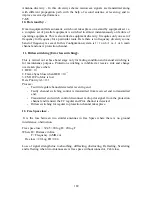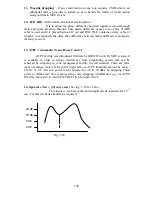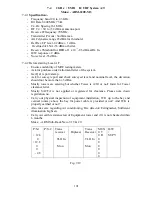
7-3.3
5. Fresnel zone: -
No. of concentric ellipsoid revolutions which defines volumes in radiation pattern of
ircular aperture and it is due to diffraction by circular aperture
ar in cross section and concentric
near the path of radio beam.
TR – Direct path and TAR –
ary transmission path
eflection of M/W energy from A.
in radio system
fading / Slow fading: - It is due to multipath propagation
of transmitted signal that have experiences due to diffraction,
tion, delay and phase shift while traveling from the source to receiver.
attenuation of single signal. It refers to the time variation of received
ement
le antenna.
margin or sensitivity to accommodate expected
ality. It is margin by which Rx level may be
ce to fall below a specific value.
l continue to work till -80 dBm. It means fade
7. X- PIC: - Cross polarization interference cancellers: -
limited frequency spectrum
can cause the
eters which is called cross
ipath propagation, antenna
n received
eceive of M1
ow let M2 channel transmit the power, measure receive power at station B of M1
hannel again so
PD will be difference of these two readings.
PD: - Both received signals are decoupled by XPD of antenna at the receiving end.
c
The first zone is circular; sub second zones are annul
with first.
This zone concept is used to analyze interference by obstacle
Second
by r
T A R
Hilly Terrain
6. Fading: -
It is a distortion in micro media and introduces errors
There are two types of fading: -
1.
Slow (shadow) fading: - It is on large scale due to movements of mobile or
obstruction within propagation environment.
2.
Past fading/ Multipath
by superimposition
in attenua
This is by
signal caused by changes in transmission media. It occurs with small mov
of mobile obstacle.
Remedy: - Diversity through multip
Fade Margin: - There should be sufficient
fading to achieve the requisite system qu
reduced without causing system performan
e.g. let Rx level -40 dBm and system wil
margin is 40 dB
Frequency reuse technique is adopted in micro system due to
a microwave signal is transmitted to both vertical and horizontal feeds and are coupled, in
the antenna. These two vertical and horizontal polarized signals
interference due to cross polarization, due to rain or hydrom
polarization interference the reasons are rain, hydro, mult
characteristics the cross pick use to cancel the effect of XPD of both signal i
direction
E.g. now station A transmit power on M1 channel measure at station B on r
channel.
N
c
X
X
187
Summary of Contents for TW0200
Page 1: ...Chapter 7 ...
Page 2: ...153 ...
Page 3: ...154 ...
Page 4: ...155 ...
Page 5: ......
Page 6: ...157 ...
Page 7: ...158 ...
Page 10: ...161 ...
Page 11: ...162 ...
Page 12: ...163 ...
Page 13: ...164 ...
Page 14: ...165 ...
Page 15: ...166 ...
Page 16: ...167 ...
Page 17: ...168 ...
Page 18: ...169 ...
Page 19: ...170 ...
Page 20: ...171 ...
Page 21: ...172 ...
Page 23: ...174 ...
Page 26: ...177 ...
Page 28: ...179 ...
Page 29: ...180 ...
Page 41: ...192 ...









































